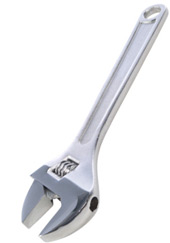By Alli Summerford
June 23, 2010
Birmingham, AL – Many small business web site owners struggle with the follow up marketing and maintenance that is the make or break factor in the effective of their new site. It is easy to feel after completing the web site design process that the project is over and can be checked off the to-do list. However, what comes next (or doesn’t, as the case may be) often marks the difference between a site that is a hard working business asset and one that falters and fails to deliver. Included below are 5 quick fixes that can improve a web site’s usability and effectiveness within the search engines.
 Optimize Page Titles
Optimize Page Titles- Include Address and Phone Number in Footer
- Have Text Links of Main Navigation Options
- Write Good Content – and, Write it Often
- Claim and Optimize Your Local Listings
First, optimize your site’s title tags. The title tag of a page is arguably the most important on-site factor in determining the ranking of a particular page. It is found at the top of a site’s code in the <title> brackets and is used as the text of the link in the search results. This is often a wasted opportunity; many sites use the same title tag throughout the site and/or do not include important keywords in the title tag. The title tag should be around 70 characters long (including spaces) and lead off with the most important keyword phrase for that page. Each page of a web site should have a unique title tag. And, the title tag should tie in directly with the subject matter included in the content of that page. For many sites, simply paying attention to this oft ignored tag will make a big difference in rankings. If the site competes in a local market, be sure to include the city and state in the title tag.
The second fix is particularly important for local businesses, but is a good practice for most sites. Be sure to include the full address and phone number of your business in the footer area on every page of the site. This is not only useful information to your site visitor who might be there just for that purpose, but it is a good signal to the search engines about where you are located and what type of searcher would most benefit from your services (those near you geographically).
Also in the footer area of the web site is the third quick fix, text links of the site’s main navigation choices. Many sites are built using image-based or Javascript-based (or both) navigation menus. Search engines are unable to follow those links, providing a barrier to their spidering and indexing the interior pages of those sites. Repeating the main navigation choices along the bottom in html text links corrects this problem.
Next up is content. Search engines love good, quality content that is completely unique (appears nowhere else online), and they will reward websites that provide it. Evaluate the website’s content by asking the following questions. Does it provide useful information? Does it establish the site/business as an expert in the field? Is the content updated on a regular basis? A site owner’s time is well spent in addressing these issues.
The final quick fix deals with local listings within the major search engines (Google Maps, Yahoo Local, etc). If the web site targets local customers or clients, it is imperative that you are well represented in these listings. A great resource to help site owners navigate this process can be found at www.getlisted.org, which is a free tool that helps owners with five of the major local listing sites.

